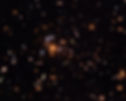
AMY REINES
ASTROPHYSICIST
01 about

Hello! I am an Associate Professor in the Department of Physics at Montana State University. Prior to moving to beautiful Bozeman, I was both a Hubble and Einstein Postdoctoral Fellow. I didn't know I wanted to be an astronomer growing up, but got hooked while taking Astronomy 101 as an undergrad at the University of Maryland. My first research experience was an optical SETI project at San Francisco State University and I later went on to study star formation in dwarf galaxies at the University of Virginia. During my last year of graduate school there, I discovered the first dwarf starburst galaxy known to host a supermassive black hole! I've been finding and studying black holes in dwarf galaxies ever since, which is currently our best observational probe of the origin of the first "seeds" of supermassive black holes.
02 research on the origin of supermassive black holes
Over the past decade, we have come to appreciate that essentially every normal galaxy, including our Milky Way, harbors a supermassive black hole at its center. These monsters play an important role in the evolution of galaxies and the appearance of the observable universe, but their origin is largely unknown.
The growth of supermassive black holes over cosmic history appears to be linked to the buildup of their host galaxies, with more massive galaxies generally harboring more massive black holes. Therefore, finding and studying the smallest "dwarf" galaxies hosting supermassive black holes can provide clues to the origin of such behemoths.
Until recently, however, astronomers knew of very few dwarf galaxies with supermassive black holes. These enormous singularities were almost exclusively found in giant galaxies, and the very existence of supermassive black holes in dwarf galaxies was controversial.
That line of thinking is changing. We now know of more than 100 dwarf galaxies hosting supermassive black holes (Reines et al. 2013)! The smallest nuclear black hole so far discovered is only about 50,000 times the Sun's mass (Baldassare, Reines et al. 2015), which is tiny in comparison to the most massive black holes that weigh in at nearly 10 billion times the Sun’s mass. We are also starting to find off-nuclear black holes that are "wandering" around their dwarf host galaxies (Reines et al. 2020).
Ultimately, searching for and studying supermassive black holes in dwarf galaxies will provide important clues to the puzzling question: How did supermassive black holes that reside in the center of nearly every full-sized galaxy get started in the first place?